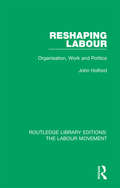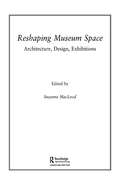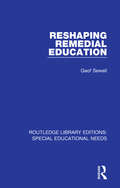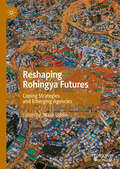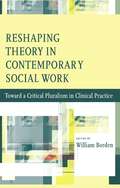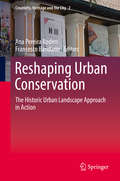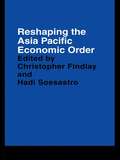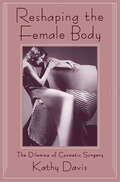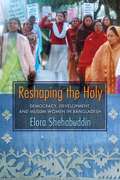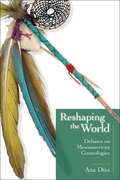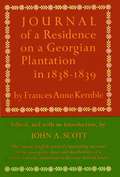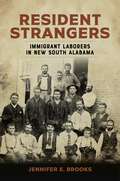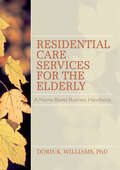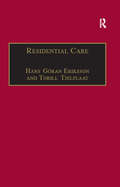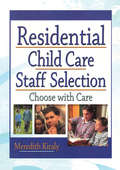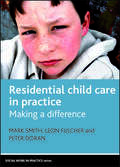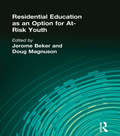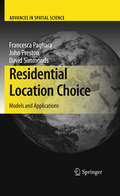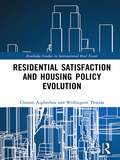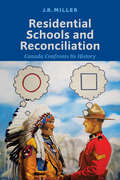- Table View
- List View
Reshaping Labour: Organisation, Work and Politics (Routledge Library Editions: The Labour Movement #16)
by John HolfordFirst published in 1988. In a few short years during and just after the Great War, the Labour Party and the trade unions established themselves firmly at the centre of the British political and industrial scene. But at the same time, the politics and organisation of both Labour and unions were reshaped. This is a grass-roots study of a key period in the building of Labour’s political and industrial base. It is a study of how unions and Labour were organised and motivated to seize their moments of destiny – and of how a new political industrial movement was limited by the common-sense of the age in which it was born. It is a study of shifting support for various Labour and Communist political and industrial strategies – of the pressures and struggles which reshaped the movement, stamping on it the character we know today. And it is a study of how labour – at work and in the community – responded to war, to prosperity, to depression.
Reshaping Museum Space: Architecture, Design, Exhibitions (Museum Meanings)
by Suzanne MacLeodReshaping Museum Space pulls together the views of an international group of museum professionals, architects, designers and academics highlights the complexity, significance and malleability of museum space, and provides reflections upon recent developments in museum architecture and exhibition design. Various chapters concentrate on the process of architectural and spatial reshaping, and the problems of navigating the often contradictory agendas and aspirations of the broad range of professionals and stakeholders involved in any new project. Contributors review recent new build, expansion and exhibition projects questioning the types of museum space required at the beginning of the twenty-first century and highlighting a range of possibilities for creative museum design. Essential reading for anyone involved in creating, designing and project managing the development of museum exhibits, and vital reading for students of the discipline.
Reshaping Remedial Education (Routledge Library Editions: Special Educational Needs #50)
by Geof SewellFirst published in 1982. After the economic crises of the late seventies and early eighties, remedial education was affected particularly badly. Due to lack of funding, a child had to be labelled and diagnosed before they could receive any remedial education. For some children this labelling produced unintended and destructive consequences. The author examines this context of failure, and analyses various approaches to remedial education.
Reshaping Rohingya Futures: Coping Strategies and Emerging Agencies
by Nasir UddinThis edited book presents many hitherto unaddressed aspects of post-genocide Rohingya lives in refugee camps in Bangladesh. Amid an everyday struggle for daily essentials, violent tensions within and outside the camps, growing anti-Rohingya sentiment in the host community as well as the decreasing international support during the repatriation process, Rohingya adolescents and youths show strategies of coping and agency to alter their present and reshape their future. An upsurge in digital literacy, mounting transnational connectivity, growing engagement with diaspora Rohingya activism and a cumulative presence in social media for sentiment mobilisation on a local and global scale has motivated them to bring about change for themselves and their community within the camps. This book accommodates such fresh and high-quality research on the Rohingya refugees living in the borderland of Bangladesh and Myanmar, conducted by acclaimed academics, professional researchers, and committed activists from across the world, for researchers and students of migration, sociology of race and ethnicity, anthropology, diaspora studies, peace and conflict studies and social work.
Reshaping Social Life
by Sarah IrwinCaught up in current social changes, we do not fully understand the reshaping of social life. In sociological analyses there is a conceptual gap between subjectivities and social structural processes, and we face real difficulties in understanding social change and diversity. Through analysis of key areas of social life, here, Sarah Irwin develops a new and exciting resource for better understanding our changing social world. Breaking with conventional approaches and reconnecting the subjective with the objective, Irwin’s book develops a new conceptual and analytical perspective with social relationality, interdependence and social context at its heart. The new perspective is developed through grounded analyses of empirical evidence, and draws on new data. It explores and analyzes: * significant changes in family forms, fertility, gender relations and commitments to employment, children and care, both now, and with comparisons to early twentieth century developments * the meshing of norms and social relations in contexts of change* diverse values, norms and perceptions of fairness, analyzed with respect to diversity over the life course, and in respect of gender, ethnicity and social class. Through analysis of context, Irwin offers new insights, and tackles puzzles of explanation. Reshaping Social Life offers a fascinating and innovative way of slicing into and re-interrogating our changing social world, and is sure to become a landmark resource for students, scholars and researchers.
Reshaping Theory in Contemporary Social Work: Toward a Critical Pluralism in Clinical Practice
by William BordenWilliam Borden's persuasive collection of original essays reaffirms the place of theory in social work practice, showing how different theoretical models, therapeutic languages, and modes of intervention strengthen eclectic and integrative approaches to psychosocial intervention. A distinguished group of scholars and practitioners examine emerging developments in cognitive theory, psychodynamic thought, resilience research and family therapy, psychobiography and narrative perspectives, and conceptions of place and environment in psychosocial intervention. They introduce integrative frameworks for intervention and examine a series of crucial issues in the field, including the role of theory in evidence-based practice, the development of practice wisdom, and the ways in which conceptions of love, acceptance, and social justice influence theorizing and practice. The contributors to this volume, each one carefully selected, reaffirm the framing perspectives and core values of the social work profession and identify fundamental challenges and tasks in developing theory and practice. Exploring contemporary yet no less essential concerns, they reflect the richness and creativity of theorizing in our time.
Reshaping Urban Conservation: The Historic Urban Landscape Approach in Action (Creativity, Heritage and the City #2)
by Francesco Bandarin Ana Pereira RodersThis volume focuses on the implementation of the 2011 UNESCO Recommendation on the Historic Urban Landscape (HUL approach), designed to foster the integration of heritage management in regional and urban planning and management, and strengthen the role of heritage in sustainable urban development.Earlier publications and research looked at the underlying theory of why the HUL approach was needed and how this theory was developed and elaborated by UNESCO. A comprehensive analysis was carried out in consultation with a multitude of actors in the twenty-first-century urban scene and with disciplinary approaches that are available to heritage managers and practitioners to implement the HUL approach.This volume aims to be empirical, describing, analyzing, and comparing 28 cities taken as case studies to implement the HUL approach. From those cases, many lessons can be learned and much guidance shared on best practices concerning what can be done to make the HUL approach work.Whereas the previous studies served to illustrate issues and challenges, in this volume the studies point to innovations in regional and urban planning and management that can allow cities to avoid major conflicts and to further develop in competitiveness. These accomplishments have been possible by building partnerships, devising financial strategies, and using heritage as a key resource in sustainable urban development, to name but a few effective strategies.For these reasons, this volume is primarily pragmatic, linked to the daily work and challenges of practitioners and administrators, using specific cases to assess what was and is good about current practices and what can be improved, in accordance with the HUL approach and aims.
Reshaping Women's History: Voices of Nontraditional Women Historians (Women, Gender, and Sexuality in American History #132)
by Barbara Winslow Julie A. Gallagher Nupur ChaudhuriAward-winning women scholars from nontraditional backgrounds have often negotiated an academic track that leads through figurative--and sometimes literal--minefields. Their life stories offer inspiration, but also describe heartrending struggles and daunting obstacles. Reshaping Women's History presents autobiographical essays by eighteen accomplished scholar-activists who persevered through poverty or abuse, medical malpractice or family disownment, civil war or genocide. As they illuminate their own unique circumstances, the authors also address issues all-too-familiar to women in the academy: financial instability, the need for mentors, explaining gaps in resumes caused by outside events, and coping with gendered family demands, biases, and expectations. Eye-opening and candid, Reshaping Women's History shows how adversity, and the triumph over it, enriches scholarship and spurs extraordinary efforts to affect social change. Contributors: Frances L. Buss, Nupur Chaudhuri, Lisa DiCaprio, Julie R. Enszer, Catherine Fosl, Midori Green, La Shonda Mims, Stephanie Moore, Grey Osterud, Barbara Ransby, Linda Reese, Annette Rodriguez, Linda Rupert, Kathleen Sheldon, Donna Sinclair, Rickie Solinger, Pamela Stewart, Waaseyaa'sin Christine Sy, and Ann Marie Wilson.
Reshaping the Asia Pacific Economic Order (PAFTAD (Pacific Trade and Development Conference Series))
by Christopher Findlay Hadi SoesastroRelationships and alignments among the nations of the world’s most populous and productive region, the Asia Pacific, are in flux. Current global political, economic and security uncertainty, heightened by 9/11 and the subsequent War on Terror, has fuelled a reassessment by many Asia Pacific nations about the structure and form of future economic and political cooperation and development. Featuring contributions from some of the most eminent and influential economists and political scientists in the Asia Pacific region, this book explores the forces reshaping the Asia Pacific economic order, and where these changes may lead. Focusing on the origins of the shift towards policy driven integration, the book examines what new structures may eventually emerge on both sides of the Pacific, the ways in which this shift will affect the progress of economic integration and how cross-Pacific relations will therefore be affected.
Reshaping the Female Body: The Dilemma of Cosmetic Surgery
by Kathy DavisFirst Published in 1995. Routledge is an imprint of Taylor & Francis, an informa company.
Reshaping the Holy: Democracy, Development, and Muslim Women in Bangladesh
by Elora ShehabuddinThrough extensive field research, Elora Shehabuddin explores the profound implications of women's political and social mobilization for reshaping Islam. Specifically, she examines the lives of Muslim women in Bangladesh who have become increasingly mobilized by the activities of predominantly secular NGOs, yet who desire to retain, reclaim, and reshape-rather than reject-their faith. In their employment and in their interactions with the legal system, the state, NGOs, and political and religious groups, women are changing state practices, views of women in the public sphere, and the nature of lived Islam itself. In contrast to most work on Islam and Muslims, which has focused on the Middle East and has privileged the study of religious and legal texts, this book redirects our attention to South Asia, home to one of the largest Muslim populations in the world, and emphasizes the actual experiences of Muslims. Women and gender, as well as Bangladesh's formally democratic context, are central to this inquiry and analysis.
Reshaping the Work-Family Debate: Why Men and Class Matter (The John Harvard Library #96)
by Joan C. WilliamsThe United States has the most family-hostile public policy in the developed world. Despite what is often reported, new mothers don’t “opt out” of work. They are pushed out by discriminating and inflexible workplaces. Today’s workplaces continue to idealize the worker who has someone other than parents caring for their children. Conventional wisdom attributes women’s decision to leave work to their maternal traits and desires. In this thought-provoking book, Joan Williams shows why that view is misguided and how workplace practice disadvantages men—both those who seek to avoid the breadwinner role and those who embrace it—as well as women. Faced with masculine norms that define the workplace, women must play the tomboy or the femme. Both paths result in a gender bias that is exacerbated when the two groups end up pitted against each other. And although work-family issues long have been seen strictly through a gender lens, we ignore class at our peril. The dysfunctional relationship between the professional-managerial class and the white working class must be addressed before real reform can take root. Contesting the idea that women need to negotiate better within the family, and redefining the notion of success in the workplace, Williams reinvigorates the work-family debate and offers the first steps to making life manageable for all American families.
Reshaping the World: Debates on Mesoamerican Cosmologies
by Ana DíazReshaping the World is a nuanced exploration of the plurality, complexity, and adaptability of Precolumbian and colonial-era Mesoamerican cosmological models and the ways in which anthropologists and historians have used colonial and indigenous texts to understand these models in the past. Since the early twentieth century, it has been popularly accepted that the Precolumbian Mesoamerican cosmological model comprised nine fixed layers of underworld and thirteen fixed layers of heavens. This layered model, which bears a close structural resemblance to a number of Eurasian cosmological models, derived in large part from scholars’ reliance on colonial texts, such as the post–Spanish Conquest Codex Vaticanus A and Florentine Codex. By reanalyzing and recontextualizing both indigenous and colonial texts and imagery in nine case studies examining Maya, Zapotec, Nahua, and Huichol cultures, the contributors discuss and challenge the commonly accepted notion that the cosmos was a static structure of superimposed levels unrelated to and unaffected by historical events and human actions. Instead, Mesoamerican cosmology consisted of a multitude of cosmographic repertoires that operated simultaneously as a result of historical circumstances and regional variations. These spaces were, and are, dynamic elements shaped, defined, and redefined throughout the course of human history. Indigenous cosmographies could be subdivided and organized in complex and diverse arrangements—as components in a dynamic interplay, which cannot be adequately understood if the cosmological discourse is reduced to a superposition of nine and thirteen levels. Unlike previous studies, which focus on the reconstruction of a pan-Mesoamerican cosmological model, Reshaping the World shows how the movement of people, ideas, and objects in New Spain and neighboring regions produced a deep reconfiguration of Prehispanic cosmological and social structures, enriching them with new conceptions of space and time. The volume exposes the reciprocal influences of Mesoamerican and European theologies during the colonial era, offering expansive new ways of understanding Mesoamerican models of the cosmos. Contributors: Sergio Botta, Ana Díaz, Kerry Hull, Katarzyna Mikulska, Johannes Neurath, Jesper Nielsen, Toke Sellner Reunert†, David Tavárez, Alexander Tokovinine, Gabrielle Vail
Residence Georgian Plantation
by Frances Anne KembleFanny Kemble was one of the leading lights of the English theater in the nineteenth century. During a triumphant tour of America, she met and married a wealthy Philadelphian, Pierce Butler, part of whose fortune derived from his family's vast cotton and rice plantation on the Sea Islands of Georgia. After their marriage, she spent several months (December 1838 to April 1839) living on the plantation. Profoundly shocked by what she saw, she recorded her observations of plantation life in a series of journal entries written as letters to a friend. But she never sent the letters, and it was not until the Civil War was on and Fanny was divorced from her husband and living in England, were they published. She is a reporter par excellence and records in vivid detail not just her own reactions, but the day-to-day operations of the estate as a business enterprise, the lives of the several "classes" of Negro slaves and their white masters, and the plantation's landscape of swamps and woods, canals and rivers, stately houses and decrepit hovels. Her account is filled with drama: duels, deaths, jealousies, and episodes of humor and tenderness which lighten the gloom but also accentuate the sadness of a world of toil and misery.
Resident Strangers: Immigrant Laborers in New South Alabama
by Jennifer E. BrooksImmigrant laborers who came to the New South in the late nineteenth and early twentieth centuries found themselves poised uncomfortably between white employers and the Black working class, a liminal and often precarious position. Campaigns to recruit immigrants primarily aimed to suppress Black agency and mobility. If that failed, both planters and industrialists imagined that immigrants might replace Blacks entirely. Thus, white officials, citizens, and employers embraced immigrants when they acted in ways that sustained Jim Crow. However, when they directly challenged established political and economic power structures, immigrant laborers found themselves ostracized, jailed, or worse, by the New South order. Both industrial employers and union officials lauded immigrants’ hardworking and noble character when it suited their purposes, and both denigrated and racialized them when immigrant laborers acted independently.Jennifer E. Brooks’s Resident Strangers restores immigrant laborers to their place in the history of the New South, considering especially how various immigrant groups and individuals experienced their time in New South Alabama. Brooks utilizes convict records, censuses, regional and national newspapers, government documents, and oral histories to construct the story of immigrants in New South Alabama. The immigrant groups she focuses on appeared most often as laborers in the records, including the Chinese, southern Italians, and the diverse nationals of the Austro-Hungarian Empire, along with a sprinkling of others. Although recruitment crusades by Alabama’s employers and New South boosters typically failed to bring in the vast numbers of immigrants they had envisioned, significant populations from around the world arrived in industries and communities across the state, especially in the coal- and ore-mining district of Birmingham.Resident Strangers reveals that immigrant laborers’ presence and individual agency complicated racial categorization, disrupted labor relations, and diversified southern communities. It also presents a New South that was far from isolated from the forces at work across the nation or in the rest of the world. Immigrant laborers brought home to New South Alabama the turbulent world of empire building, deeply embedding the region in national and global networks of finance, trade, and labor migration.
Residential Care Services for the Elderly: Business Guide for Home-Based Eldercare
by Doris K WilliamsAs the elderly population continues to increase, the need for suitable housing will continue to rise as well. This handbook is designed to help individuals and families determine the feasibility of starting a small home business providing residential home services for one or more elderly persons. Persons interested in starting a business of this type will find this unique book a goldmine of important information. Residential Care Services for the Elderly is a valuable decision-making tool which helps readers determine if this type of business venture is appropriate and, if so, how to start and maintain a residential care service for the elderly. Thorough coverage of background and implementation details provides potential operators with a rationale and necessary information. Numerous self-assessment and resource inventories in this practical handbook will guide readers in determining their areas of interests and competencies. Opportunities for networking among state licensing/standards agencies, funding agencies, and a listing of elder care organizations and advocacy groups adds value to this time-saving resource, ensuring a quicker and more likely success. Case studies, detailed guides, and the discussion of positive and negative aspects of being the owner of a small residential care business, based on interviews with people currently running elder care residential services, are also included. All aspects of business operations are covered in Residential Care Services for the Elderly, including sources of funding and potential incomes; emotional and financial cost/benefit factors; parameters of organizing the business including personnel, respite care workers, need for registered nurses, and food service; special needs of clients; details of financial plans with outlines and sample forms; and variables of success and failure. Graduate and undergraduate students taking classes in regard to gerontological business and long-term care related alternatives will also find this statistic-filled handbook a useful reference.
Residential Care: Horizons for the New Century (Welfare and Society)
by Torill TjelflaatDiscussing key contemporary issues in residential and foster care for children, this theoretically and empirically rich volume draws on new research from across Europe and Canada. Contributions stem from a broad spectrum of researchers and practitioners in the field, engaging in comparative international perspectives of problems of enduring relevance. This book particularly focuses on anti-oppressive practice, foster care, mainstreaming in education, ethnic origin, competency level and research as a tool in residential care. The book will make a significant impact to the literature on social work and child and family welfare.
Residential Child Care Staff Selection: Choose with Care
by Meredith KiralyHere's vital information on making the right recruitment choices, getting the best staff, and avoiding potential abusers! "More than a set of procedures, good staff selection practice is about a set of principles that embody particular attitudes to the task. If we achieve these basic principles, we will go a long way towards eliminating selection errors and the risk of abuse that follows such errors." -Author Meredith Kiraly Residential Child Care Staff Selection: Choose With Care draws upon international research and the experience of practitioners to help you improve your ability to recruit the best staff. With a minimum of jargon, this book covers the range of selection methods and advocates a considered-but not cumbersome-approach that uses more than one method of assessing skills. It illustrates management techniques that reduce the likelihood of abuse and will show you how to avoid recruiting potentially abusive individuals. Residential Child Care Staff Selection: Choose With Care provides insightful background information, examining the developmental needs of children; issues in the care of children away from home; abuse and pedophilia; and legal and ethical issues. Then the book discusses in more detail research findings which underpin key principles of good care and good staff selection, and best practice in a range of recruitment and selection practices. You'll also find a recruitment guide for all organizations that work with children and young people. The recruitment guide thoroughly examines the challenges and pitfalls of the recruitment process and will help you identify those who are most fit for this difficult yet extraordinarily rewarding career, and avoid recruiting those most likely to be abusive. This valuable book also includes four helpful appendixes that provide: examples of situational and behavioral questions to use in interviews Equal Employment Opportunity guidelines for acceptable and unacceptable interview questions a profile of a skilled residential child care worker that you can use to judge whether candidates measure up sample staff selection forms-job descriptions, application form, a short-listing grid, job interview schedule, interview performance rating form, a reference check proforma, and a selection report
Residential Child Care in Practice: Making a Difference (Social Work in Practice series)
by Mark Smith Leon FulcherWritten by experienced practitioners and academics, this is a core text about the practice of residential child care. It takes as its starting point the fact that residential child care involves workers and children sharing a common lifespace, in which the quality of interpersonal relationships is key. Each chapter highlights relevant policy guidance and is developed around a practice scenario, discussing key knowledge skills and values relating to its theme. This highly practical book should, therefore, be of value to a range of students at different academic levels, from VQ to Masters, and to practitioners and managers in residential child care. The book draws on ideas from child and youth care and social pedagogic traditions and will appeal to a worldwide audience and provides a valuable addition to the emerging literature around social pedagogy.
Residential Child Care: Prospects and Challenges
by Claire Cameron Christine Barter Brigid Daniel Jane Scott Harriet Ward Andrew Kendrick Ruth Emond Laura Steckley Malcolm Hill Jo Dixon Janet Boddy Lynne Hunter Kirsten Stalker Aileen Barclay Judy Furnivall Irene Stevens Joe Francis Roger Bullock Van Beinum Teresa O'NeillResidential Child Care draws on the latest research to offer guidance for developing best practice, policy and improved outcomes for children and young people. Contributors examine important aspects of residential care work, and address the concerns about the poor outcomes for young people leaving care and the role of residential child care as a positive choice within the range of care services. Key issues addressed include promoting well-being and development for young people; tackling potential discrimination in residential policy and practice; responding to areas of discord in residential child care; and underpinning themes relating to residential child care, such as staff development and support. This book will provide essential reading for policy makers, managers and practitioners in residential care and the social services, and students in the field.
Residential Education as an Option for At-Risk Youth
by Jerome Beker Doug MagnusonResidential Education as an Option for At-Risk Youth explores recent residential programs in Israel, draws comparisons with their European counterparts, and recommends practical approaches for the revitalization of such programs in the United States. This volume refutes the conventional professional “wisdom” in the United States that residential group care programs for children and youth are intrinsically flawed and counterproductive. Instead, it delivers effective models for the implementation of effective residential services. The editors and authors demonstrate the growing need for residential programs, given the overburdened family foster care resources, swelling numbers of “zero-parent” families, and homeless youth. Though the United States helped launch and develop residential services in Europe in the aftermath of World War II and has produced many excellent thinkers in the domain of quality residential group care, American programs have languished in recent decades. This book is designed to accelerate and facilitate progress in revamping and establishing excellent residential group care. The authors examine residential education as a developmentally based alternative to the more clinically and correctionally oriented programs for marginal children and youth dominating this field in the United States.The authors present their material in the context of appropriate theoretical principles, yet in practical ways that will permit program developers and managers to implement it effectively. Some of the specific areas chapters discuss are: exemplary Israeli programs as observed by visiting American professional in social work and allied fields important program variables and the cultural influences that may affect them African American experience for such programs a conceptual model for building successful residential education programs key organizational and management considerationsResidential Education as an Option for At-Risk Youth serves as a vital resource for ambitious program developers and managers wishing to reconceptualize and enrich their programs. It will also benefit advanced students, practitioners, and decision makers who have had, heretofore, few resources to rely on when seeking to promote more effective programs for socially marginal children and youth.
Residential Location Choice: Models and Applications
by John Preston David Simmonds Francesca PagliaraThe effective planning of residential location choices is one of the great challenges of contemporary societies and requires forecasting capabilities and the consideration of complex interdependencies which can only be handled by complex computer models. This book presents a range of approaches used to model residential locations within the context of developing land-use and transport models. These approaches illustrate the range of choices that modellers have to make in order to represent residential choice behaviour. The models presented in this book represent the state-of-the-art and are valuable both as key building blocks for general urban models, and as representative examples of complexity science.
Residential Satisfaction and Housing Policy Evolution (Routledge Studies in International Real Estate)
by Clinton Aigbavboa Wellington ThwalaThis book explores residential satisfaction and housing policy trends in developing nations by using subsidised low-income housing examples in South Africa, Ghana and Nigeria as case studies. While there has been much documentation on the formation of residential satisfaction and the evolution of housing policy in developed nations, relatively little has been written about these topics in developing nations. This book provides readers with two major practical insights: The first is focused on the theoretical underpinning of residential satisfaction and the formation of residential satisfaction in subsidised low-income housing through the development of a conceptual framework, while the second is focused on housing policy evolution and its trends in South Africa. In this section of the book, comparative overviews of public housing in two West African countries are provided with an emphasis on the philosophical basis for its development in these countries. The central aim of the book is to provide readers with ideas on residential satisfaction formation and housing policy trends in South Africa.
Residential Schools and Reconciliation: Canada Confronts Its History
by J. R. MillerSince the 1980s successive Canadian institutions, including the federal government and Christian churches, have attempted to grapple with the malignant legacy of residential schooling, including official apologies, the Royal Commission on Aboriginal Peoples, the Indian Residential Schools Settlement Agreement, and the Truth and Reconciliation Commission (TRC). In Residential Schools and Reconciliation, award winning author J. R. Miller tackles and explains these institutional responses to Canada’s residential school legacy. Analysing archival material and interviews with former students, politicians, bureaucrats, church officials, and the Chief Commissioner of the TRC, Miller reveals a major obstacle to achieving reconciliation – the inability of Canadians at large to overcome their flawed, overly positive understanding of their country’s history. This unique, timely, and provocative work asks Canadians to accept that the root of the problem was Canadians like them in the past who acquiesced to aggressively assimilative policies.
Residential Segregation Patterns of Latinos in the United States, 1990-2000: Testing The Ethnic Enclave And Inequality Theories (Latino Communities: Emerging Voices - Political, Social, Cultural and Legal Issues)
by Michael E MartinHistorically, residential segregation of Latinos has generally been seen as a result of immigration and the process of self-segregation into ethnic enclaves. The only theoretical exception to ethnic enclave Latino segregation has been the structural inequality related to Latinos that have a high degree of African ancestry. This study of the 331 metropolitan area in the United States between 1990 and 2000 shows that Latinos are facing structural inequalities outside of the degree of African ancestry. The results of the author's research suggest that Latino segregation is due to the mobility of Latinos and structural barriers in wealth creation due to limited housing equity and limited occupational mobility. In addition, Latino suburbanization appears to be a segregation force rather than an integration force. This study also shows that Mexicans, Puerto Ricans and Cubans have different experiences with residential segregation. Residential segregation of Cubans does not appear to be a problem in the U.S. Puerto Ricans continue to be the most segregated Latino sub-group and inequality is a large factor in Puerto Rican segregation. A more in-depth analysis reveals that the Puerto Rican experience is bifurcated between the older highly segregated enclaves where inequality is a large problem and new enclaves where inequality and segregation are not an issue. The Mexican residential segregation experience reflects that immigration and mobility are important factors but previous theorists have underestimated the barriers Mexicans face in obtaining generational wealth and moving from the ethnic enclave into the American mainstream.
